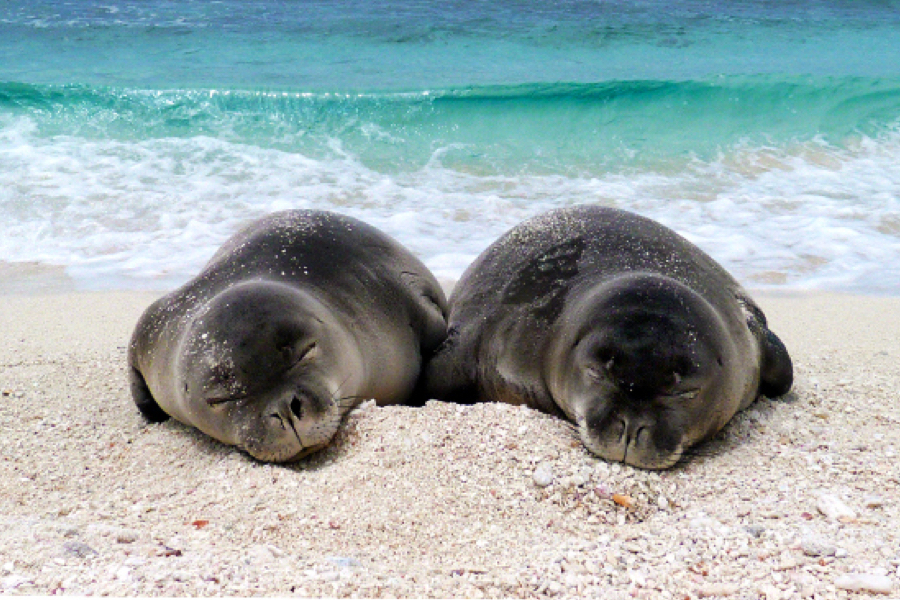Ecosystems
Ecosystems
Part of our mission is to steward healthy and resilient coastal and marine ecosystems that provide valued resources to our nation.
Coastal and marine ecosystems involve complex interactions between organisms, their environment, and human activities. Ecosystem components interact through dynamic chemical, physical, and biological processes that influence organism populations and ecosystem sustainability.
These systems are ever changing and can be vulnerable to natural and human-induced stressors such as extreme weather, fishing pressure, pollution, and habitat loss.
We study the entire ecosystem to manage our diverse marine resources more comprehensively with regional fishery management councils and other partners. This enables us to better recognize and address changing conditions and facilitate tradeoff decisions.
Featured News
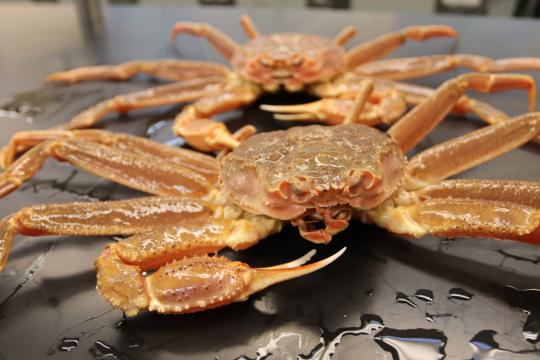 Bering Sea snow crab support a valuable commercial fishery. Photo: NOAA Fisheries.
Bering Sea snow crab support a valuable commercial fishery. Photo: NOAA Fisheries.
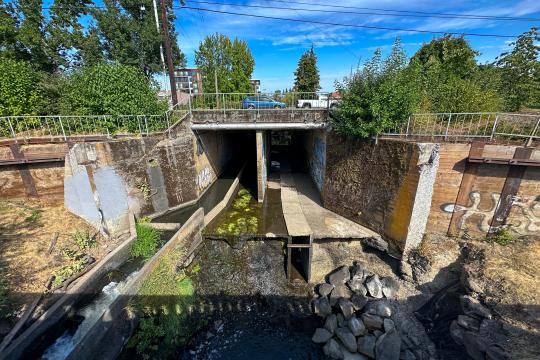 Kellogg Creek Dam (Photo: Jodie Robinson/NOAA)
Kellogg Creek Dam (Photo: Jodie Robinson/NOAA)
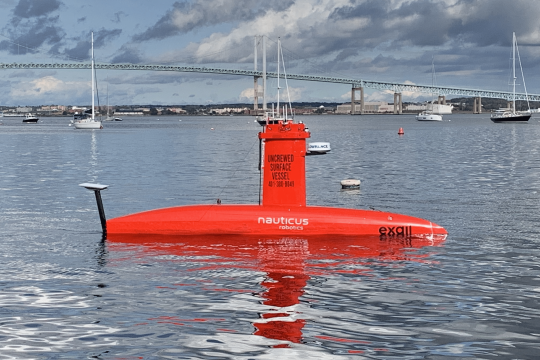 The Exail DriX, an uncrewed surface vehicle, in Narragansett Bay. Credit: NOAA/Michael Jech
The Exail DriX, an uncrewed surface vehicle, in Narragansett Bay. Credit: NOAA/Michael Jech
More Information
7 football fields per hour
Human activities, such as development, are a primary cause for coastal wetland loss. Studies have found that this loss is substantial—about seven football fields per hour! Wetlands filter waters that drain into the ocean, reduce the damaging effects of hurricanes and storms on our coastal communities, help our shorelines adapt to climate change, and play an important role in the productivity of commercial and recreational fisheries.
3 levels of ecosystem management
We work to maintain ecosystems in a healthy, productive, and resilient condition so they can provide the services humans want and need. Fishery managers and scientists frequently reference three levels of ecosystem management in relation to marine fisheries: ecosystem based management, ecosystem based fisheries management, and ecosystem approach to fisheries management.
5,000 known species of phytoplankton
Phytoplankton are the foundation of the marine food web. They feed lots of other marine life, from microscopic organisms to huge whales. By studying the more than 5,000 species of phytoplankton, we are able to evaluate ecosystem health and learn about any changes in these ecosystems.
8 distinct regional ecosystems
The physical boundaries of regional ecosystems are based on four ecological criteria: bathymetry, hydrography, productivity, and trophic relationships. Based on these criteria, there are eight distinct regional ecosystems around the coastal margins of United States.
Ecosystem-Based Fisheries Management
We are working to adopt an ecosystem-based approach for managing sustainable fisheries. Fishing is only one variable that affects a species' population. Interactions with other species, environmental changes, pollution, and other stresses on habitat and water quality can affect fish populations. To more effectively assess the health of any given fishery and to determine the best way to maintain it, fishery managers should take ecosystem considerations into account.
Integrated Ecosystem Assessments
We use integrated ecosystem assessments as a science-based decision-support process that provides the analytical framework to implement ecosystem-based approaches to manage our marine resources, including fisheries and protected resources. Integrated ecosystem assessments synthesize data on physical, chemical, ecological, and human processes within ecosystems to provide the sound interdisciplinary ecosystem-based science, trade-off evaluation, and management advice required to ensure our nation’s marine resources are sustainable and deliver a broad spectrum of benefits and services.
Understanding Ecosystem-Based Fisheries Management
Ecosystem-based fisheries management is a holistic approach that recognizes all the interactions within an ecosystem rather than considering a single species or issue in isolation.
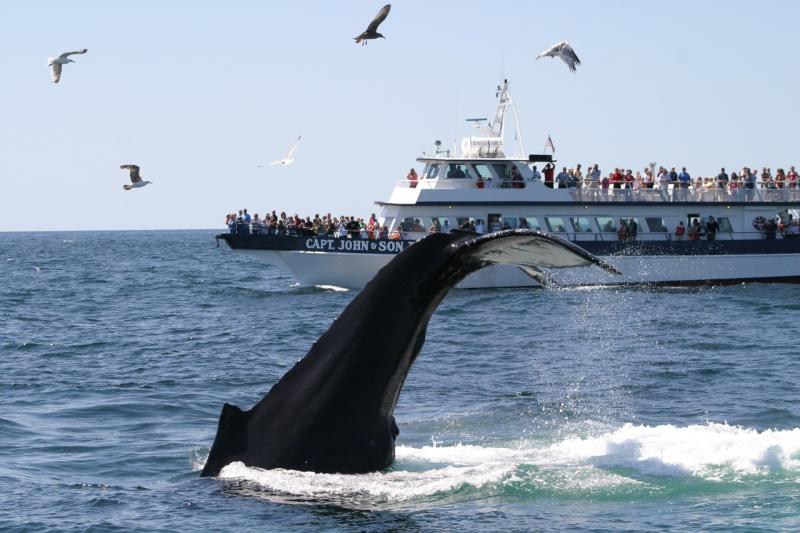
Multimedia
 Bering Sea snow crab support a valuable commercial fishery. Photo: NOAA Fisheries.
Bering Sea snow crab support a valuable commercial fishery. Photo: NOAA Fisheries.
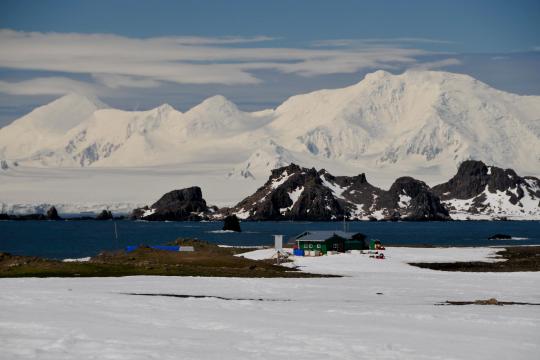 Cape Shirreff field camp on Livingston Island, one of the most breathtaking places in Antarctica. Credit: NOAA Fisheries
Cape Shirreff field camp on Livingston Island, one of the most breathtaking places in Antarctica. Credit: NOAA Fisheries
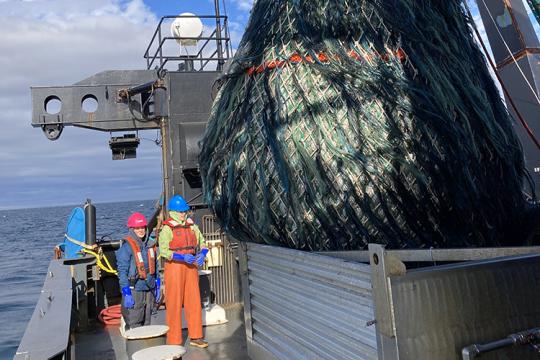 After each survey tow, the net is retrieved and the catch is emptied into a hopper where a series of conveyors move the catch to the sorting and processing area aboard the NOAA Ship Henry B. Bigelow. There, scientists sort the catch and collect data and biological samples. Credit: NOAA Fisheries/Jessica Blaylock
After each survey tow, the net is retrieved and the catch is emptied into a hopper where a series of conveyors move the catch to the sorting and processing area aboard the NOAA Ship Henry B. Bigelow. There, scientists sort the catch and collect data and biological samples. Credit: NOAA Fisheries/Jessica Blaylock
U.S. Regional Ecosystems
The physical boundaries of regional ecosystems are based on four ecological criteria: bathymetry, hydrography, productivity, and trophic relationships. Based on these criteria, there are eight distinct regional ecosystems around the coastal margins of the United States:
More Information
Ecosystem-Based Fishery Management
Ecosystem-based fishery management is a cornerstone of our efforts to sustainably manage the nation’s marine fisheries. It complements and builds off-of traditional single species fishery management. This approach considers social, economic, and ecological trade-offs across multiple fisheries and habitats. Making sound decisions depends on access to reliable, accurate, and actionable ecological, social, and economic information, tools, approaches, and models.
Ecosystem-based fishery management helps NOAA Fisheries and our regional fishery management council partners meet sustainable fishery management goals under multiple mandates such as:
- Magnuson-Stevens Fishery Conservation and Management Act
- Endangered Species Act
- Marine Mammal Protection Act
- National Environmental Protection Act
- National Aquaculture Act
The Ecosystem Based Fishery Management Policy and Road Map describe how NOAA Fisheries implements ecosystem based fisheries management based on six guiding principles:
- Implement ecosystem-level planning.
- Advance our understanding of ecosystem processes.
- Prioritize vulnerabilities and risks of ecosystems and their components.
- Explore and address trade-offs within an ecosystem.
- Incorporate ecosystem considerations into management advice.
- Maintain resilient ecosystems.
NOAA Fisheries has developed ecosystem-based fisheries management implementation plans. These plans complement work already underway by regional fishery management councils through fishery management plans and fishery ecosystem plans.
Science
Managing our nation’s marine resources depends on coordinated scientific effort to understand and provide advice regarding the fundamental structures, functions, processes, and natural and human interactions that shape marine ecosystems and the services they provide. To accomplish this objective, our science programs include the following key components:
- Observations, mapping, and data: Collecting, analyzing, and reporting information about living marine resources and ecosystem condition.
- Research and modeling: Testing hypotheses about ecosystem structure and function; integrating a broad array of data; and investigating management scenarios.
- Synthesis and evaluation: Providing scientific advice using relevant data about an ecosystem and its future status with respect to specified management objectives.
Science and Research Programs
Integrated Ecosystem Assessments
We use integrated ecosystem assessments as a science-based decision-support process that provides the analytical framework to implement ecosystem-based approaches to manage our marine resources, including fisheries and protected resources. Integrated ecosystem assessments synthesize data on physical, chemical, ecological, and human processes within ecosystems to provide the sound interdisciplinary ecosystem-based science, trade-off evaluation, and management advice required to ensure our nation’s marine resources are sustainable and deliver a broad spectrum of benefits and services.
Learn more about integrated ecosystem assessments
Habitat Science
A research program that examine the relationships among species and their environment. Habitat science and assessments provide essential scientific advice to resource managers on the current status and future trends of marine habitats utilized by living marine resources.
Learn more about habitat science and assessments
Climate Science
Science activities include tracking current conditions, providing early warnings and forecasts, understanding the mechanisms of climate impacts, and projecting future conditions all to evaluate possible options for fisheries management and protected resources conservation in a changing world.
Learn more about climate and fisheries
Fisheries and the Environment
This is a research program aimed at improving our understanding of environmental impacts on living marine resources. It applies that information to improve stock assessments, ecosystem assessments, and ecosystem-based approaches to fisheries management.
Learn more about Fisheries and the Environment
Planktonic Ecosystems Data and Analytical Products
Oceanic plankton constitute the largest reservoir of biomass in the world's oceans and play a significant role in the transfer of energy and materials within the oceanic ecosystems. Gaining access and insight into world's collection of historical and ongoing plankton monitoring data is essential for evaluating ecosystem health and for detecting changes in these ecosystems.
Learn more about planktonic ecosystems data and analytical products
NOAA National Systematics Laboratory
This lab conducts systematic, taxonomic, and life history research on marine organisms of economic and ecological value, thereby contributing to the understanding of marine biodiversity within marine ecosystems.
Learn more about our National Systematics Laboratory
Ecosystem Modeling
To support ecosystem-based fisheries management, NOAA Fisheries carries out many interrelated efforts to monitor, model, and manage the nation's living marine resources (LMRs) and associated goods, services, and emergent properties from marine ecosystems. Ecosystem models are quantitative tools used for resource management that incorporate factors internal and external to a focal LMR or group of LMRs. Ecosystem models are focused on practical applications, such as integrating qualitative and quantitative information on an ecosystem for improved understanding of ecosystem function, evaluating trade-offs among ecosystem components and management objectives, or to set specific management reference points or provide ecosystem context for reference points.
Documents
Ecosystem-Based Fisheries Management Case Studies
Three case studies highlighting ecosystem-based fisheries management implementation.
Alaska Salmon Task Force Meeting Minutes January 25, 2024
Alaska Salmon Task Force Meeting Minutes for January 25, 2024.
Carbonate Budget Assessments in the U.S. Pacific Islands: Report of Methods Comparison Results and Summary of Standard Operating Procedures
The carbonate budget assessments methodologies developed, tested, and considered for inclusion in…
Alaska Salmon Task Force Meeting Minutes November 14, 2023
Alaska Salmon Task Force Meeting Minutes for November 14, 2023.
Data & Maps
2023 Stock Assessment And Fishery Evaluation Report For The Groundfish Resources Of The Gulf Of Alaska - Introduction
The National Standard Guidelines for Fishery Management Plans published by NOAA Fisheries require…
2023 Assessment Of The Thornyhead Stock Complex In The Gulf Of Alaska
The Gulf of Alaska thornyhead complex remain on a biennial stock assessment schedule with a full…
2023 Assessment Of The Skate Stock Complex In The Gulf Of Alaska
There are currently no target fisheries for skates in the Gulf of Alaska, and directed fishing for…
2023 Assessment Of The Shortraker Rockfish Stock In The Gulf Of Alaska
Gulf of Alaska rockfish have historically been assessed on a biennial schedule to coincide with the…
Research
2024 Alaska Fisheries Science Center Seminar Series
2024 Seminar Series held virtually using Webex.
Outreach & Education
Draft Alaska Salmon Research Task Force Report April 2024
Draft Alaska Salmon Research Task Force Report, April 2024
Derek Chamberlin Seminar Flyer
A flyer for presentation by Derek Chamberlin during the 2024 Alaska Fisheries Science Center…
Melanie Esch Seminar Flyer
A flyer for presentation by Melanie Esch during the 2024 Alaska Fisheries Science Center Seminar…
Jenny Stern Seminar Flyer
A flyer for presentation by Jenny Stern during the 2024 Alaska Fisheries Science Center Seminar…

